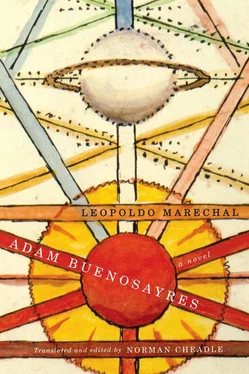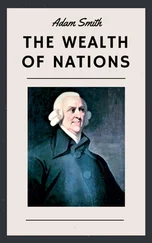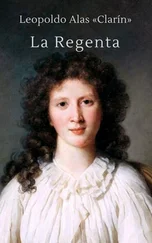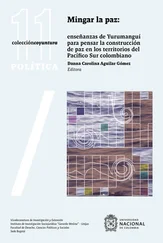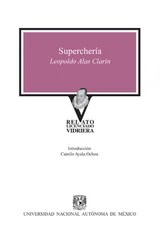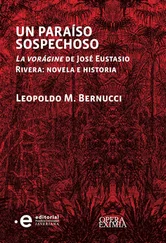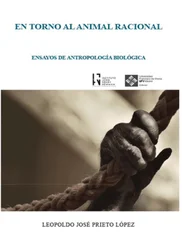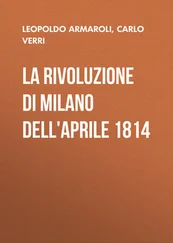BOOK TWO, CHAPTER 2
1 Captain Amundsen (see 631n15). The tertulia at the Amundsen house recreates the ambience of the Lange tertulia, famous in the annals of Argentine cultural history. After the death of her Norwegian husband, Mrs Lange held weekly social gatherings at 1756 Tronador Street with her five beautiful daughters in attendance: Irma, Haydée, María Cristina, Norah, and Ruth (Ruti). (A younger son, Juan Carlos, died young.) In the novel, the five sisters are reduced to three — Ethel, Haydée, and Solveig — Haydée Lange corresponding to Haydée Amundsen. In real life, the very beautiful Haydée Lange enamoured many of the tertulia’s male vistors — including Borges and Xul Solar, according to at least one biographer of Norah Lange. Ruth Lange is novelistically transposed to Ruty Johansen; Irma, the reader will recall, is the name of the cleaning girl who seduces Adam at his rooming house. It has been conjectured that Solveig Amundsen corresponds to Norah Lange (1905–1972), the sole female martinfierrista and dubbed in those years the “Muse of Martín Fierro .” But the passive Solveig bears scant resemblance to the real-life Norah, who was outgoing, exuberant, and highly articulate. Franky Amundsen does not correspond to any male Lange, but bears some resemblance to Oliverio Girondo (1891–1967), who later married Norah Lange to form one of the most storied couples in Argentine literary history (see http://www.girondo-lange.com.ar/, website maintained by Susana Lange).
2 Maimonides (1138–1204) was a Spanish Jew born in Córdoba. A great rabbinical authority and physician, prolific writer and scholar, in his philosophical masterwork, the Guide of the Perplexed , he attempts to reconcile religion with secular knowledge. Samuel’s boutade is not entirely such: Maimonides in his Guide claims that “before Plato and Aristotle introduced science and philosophy to the Greeks, the patriarchs introduced it to Israel” ( Stanford Encyclopedia of Philosophy [online]).
3 “El estado actual de la doctrina de las secreciones internas” (1922) [The Current Status of the Doctrine of Internal Secretions] was the title of a lengthy address given by the prestigious Gregorio Marañón (1887–1960), both a humanistic intellectual/writer and a medical doctor/researcher who pioneered the science of endocrinology. But Marechal might have left the phrase alone, had not José Ortega y Gasset, citing a 1915 article by Marañón, glorified it in his 1921 essay “El Quijote en la escuela” [ Don Quixote in the School Curriculum]: “No other chapter of contemporary science, perhaps, is more revolutionary of old ideas than the doctrine of internal secretions” (Ortega 279), a sentence apparently echoed by Lucio Negri.
4 Santos Vega: a gaucho legendary for his talent as a payador whose historical existence (still debated) dates to the late eighteenth or early nineteenth century in the Province of Buenos Aires. The young Bartolomé Mitre was the first to make him a symbolic figure of the newly independent Argentine nation in his 1838 poem “A Santos Vega.” Toward 1850 Hilario Ascasubi wrote a novel in verse titled Santos Vega, o Los mellizos de La Flor . Eduardo Gutiérrez’s serial novel Santos Vega (1880) and its sequel Una amistad hasta la muerte (1881) [A Die-Hard Friendship] make the character an outlaw gaucho like his own character, Juan Moreira (see 645n28). With this moreirización of the legendary payador, Santos Vega enters the imaginary of populist criollismo (see 649n27) much to the chagrin of the cultural elite represented in gentlemen-writers such as Rafael Obligado, who published his four-part poem Santos Vega in 1885.
5 Perhaps a veiled reference de José Ingenieros (1887–1925), famous psychologist, criminologist, and socialist intellectual who wrote a “Scientific Interpretation and Therapeutic Value of Hypnotism” (1903). (The Spanish ingeniero means engineer.) But Navascués ( AB 211n) has found a manuscript note indicating that Valdez corresponds to the ingeniero Acevedo, a maternal uncle of J.L. Borges.
6 Barcia (293n) points out that this passage cites two lines from Marechal’s poem “De la Patria joven” (from Odas para el Hombre y la Mujer [1929]): “Un pie arraigado en la tierra en la niñez y el otro / ya tendido en los bailes de la tierra.” In the poem, the youthful Argentine nation is thus figured as a young girl; the transposition of these verses may suggest a national-allegorical dimension in the character Solveig.
7 Schultz is based on Xul Solar (1887–1963), avant-garde painter, musician and musicologist, writer, astrologer, and “visionary” aesthetician. His biographer, Álvaro Abós (173), finds that Schultz, unlike the caricatures of other notable cultural figures in the novel, is a fairly accurate reflection of Xul and of the way he was regarded in his milieu. Cintia Cristiá, in her musicological study of Xul Solar, appears to share this view. Schultz’s distaste for Beethoven and Grieg, Cristiá observes (62), indicates that Marechal would have been aware of Xul Solar’s indifference toward nineteenth-century music (with the exception of Wagner) and his preference for Bach and twentieth-century avant-garde composers.
8 Cristiá’s comment on this passage: “This hyperbole, consistent with the parodic tone of the novel, is not so hyperbolic if one considers that on the traditional pentagram, without alterations or additional lines, it is posible to write only eleven notes, whereas Xul Solar’s hexagram… accommodates twenty-six distinct pitches” (69).
9 As early as 1929, Xul Solar was attempting to redesign the piano keyboard. See Cristiá (76–84).
10 In an autobiographical note penned by Xul Solar, he claims that he is a “recreator, not an inventor” (qtd. in Artundo 43).
11 Norah Lange in a 1934 speech attributes the flower-eating gesture to the poet Amado Villar (1889–1954) ( Estimados congéneres , 11–12).
12 A covered fruit-and-vegetable market, inaugurated in 1893, on the avenida Corrientes in Buenos Aires. Since 1999 it as been a mall, el Abasto Shopping .
13 Xul Solar did indeed invent a new language named neo-criollo [sic], a streamlined composite of Spanish and Portuguese. Later he abandoned neocriollo and concentrated on inventing the panlengua , which was to incorporate features of several languages (Lindstrom 244). Xul also spoke, however, about his plans for certain “anatomical improvements” in the human type to produce a “Homo Novus” (Artundo 49). Schultz’s discourse conflates in the Neocriollo these several notions of Xul Solar. Both Barcia and Navascués reproduce, in their respective editions of Adán , Marechal’s pencilled sketch of Schultz’s Neocriollo.
14 George Brummel (1778–1840): an Englishman, the most famous dandy of the nineteenth century, who created the rules of etiquette in his era.
15 Schultz’s notions are not much more fantastical than those proposed by Xul Solar in his 1957 article “Propuestas para más vida futura” [Proposals for More Life in the Future] (in Artundo 146–51). These include: (1) communal wetnurses ( col-nursas , in the panlengua ) endowed with mammaries the size of demijohns, which in turn would be equipped with multiple retractable ducts designed to feed the population; (2) a long, prehensile tail to serve the human body as a third arm; (3) a skin-sack inflatable at will by hydrogen-generating glands, its purpose being to offset the force of gravity on the human body; (4) extremely long arms like wings or the suspension lines of a parachute meant for human flight. Oscar Svanascini (9) mentions in addition to these “improvements” the following: suppression of the human stomach; a swivel-neck allowing the head to turn 360 degrees; eyes on the tips of horns like those of snails.
Читать дальше
